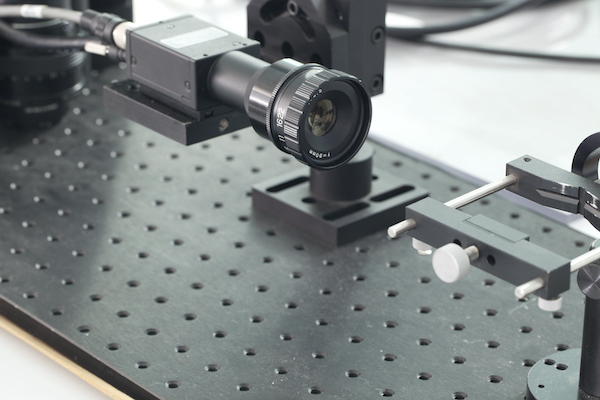The manufacturing industry keeps evolving and advancing in terms of technological developments. In the past, humans were involved in every aspect of manufacturing; the industry thrived on manual labor. Yes—machines provided manufacturers with some sort of [much needed] relief. However, human intervention in pretty much every part of the manufacturing process was inevitable. In other words, machines were mere tools in the hands of manufacturers and still required human intelligence to function.
That is not the case today. The advancing technology is gradually minimizing human intervention, especially in the area of inspection. Manual labor is now minimal in most processes of manufacturing. This has been made possible because of machine vision (also known as computer vision) systems.
Machine vision systems have completely eradicated the need for manual inspection (or at least, they are well on their way to), as they can inspect both major and minor defects in manufactured products. In fact, these machines are transcending human capabilities and proving to be better at product examination.
These systems are primarily outfitted with a high-quality lens, which facilitates image-based inspection. The entire inspection process is automated, which means more convenience and enhanced productivity.
Lately, there has been an improvement in machine vision systems. They were initially designed for lower accuracy requirements and lesser complex operations; however, they now have enhanced programmability and speed.
Consequently, the machine vision systems can now perform as intricate tasks as hole inspection.
Industrial Applications of Machine Vision Systems for Hole Inspection
The hole inspection feature of machine vision systems has majorly benefitted the manufacturing and processing industry. Leveraging these precision-oriented inspection systems, manufacturers are able to assess their manufactured goods and eliminate all defects at an early stage—saving them time, money, and reputation down the line.
Machine vision systems are used to inspect objects with cylindrical and conical shapes. They are also used to examine cavities and containers. The automated inspection system is designed to inspect not only the circular bottom of a hole but also its vertical walls.
Hole Inspection in the Automotive Industry
The automobile industry involves manufacturing components of various sizes, which make up a fully functional vehicle. Most of the components consist of numerous holes where the bolts are later screwed in.
The vision inspection system ensures that every component has the correct number of holes and the hole quality is intact. The machine vision systems even measure the sizes of each hole. Components with incorrect hole sizes or numbers are removed from the production line. The issue is, thus, tackled before it escalates into product recalls.
The industry also appreciates the vision systems for performing brilliantly in the high-volume production of valve covers—an essential component of an engine. They are faster than the coordinate measuring machines (CMM) that were used before them.
The vision inspection systems excel at inspecting the seven holes in a valve cover and determining their position and size.
Manufacturers prefer the machine vision system not only because of the accurate results but also because these systems are cost-effective and compact. Additionally, they can be easily reprogrammed to handle any design changes.
Hole inspection in the Mining Industry
Two companies offering bespoke automation solutions, including the UK-based RNA Automation (a member of Rhein-Nadel Automation) and Fisher Smith, unveiled machine vision systems’ proficiency at inspecting holes in gas safety devices. They produced a vision inspection system that inspected laser-drilled holes.
The inspection system automated the inspection of holes in a plastic component of gas detectors used for the mining industry. The plastic component comprised laser-drilled holes of various diameters.
The machine was made to accommodate the inspection of holes of various sizes. Both the size of the point of entry and the point of exit were inspected. The accuracy was essential as it allowed the sensor to fit the plastic component and operate correctly perfectly.
Hole Inspection in the Telecommunications Industry
Manufacturers in the telecommunications industry also leverage machine vision systems to produce printed circuit boards (PCBs). A PCB is a fundamental component of every modern electronic device and connects all the electronic components in it.
PCBs can be manually inspected either with a naked eye or through magnification. However, as human inspection capabilities are limited, manufacturers prefer automated optical inspection (AOI) using machine vision systems.
These inspection systems carefully examine all the holes on the board. The location of the holes plays a crucial role and impacts the subsequent placement of other electronic components. Therefore, visual inspection is a significant process.
The machine vision systems look for products with incorrectly located, missing, or excessive holes. Such intricate tasks require meticulous examination, and that is why automated inspection has slowly replaced manual inspection. The former method detects defects beforehand and reduces costs.
Conclusion
The quantitative measurement and inspection that the machine vision systems perform are beyond the abilities of a human. The precision with which these machines perform a task and the accuracy of the results they deliver is commendable. Therefore, these systems have become an important element in manufacturing goods.
These machines protect every component from wear and tear, as there is minimal human handling. This ensures that all manufactured products have enhanced quality and are free from all errors that are almost inevitable in manual inspections.
The vision inspection machines are also preferable as they boost productivity and positively impact competitiveness. Most importantly, the less human intervention they offer helps keep the human workers safe from the hazardous environments at manufacturing facilities.